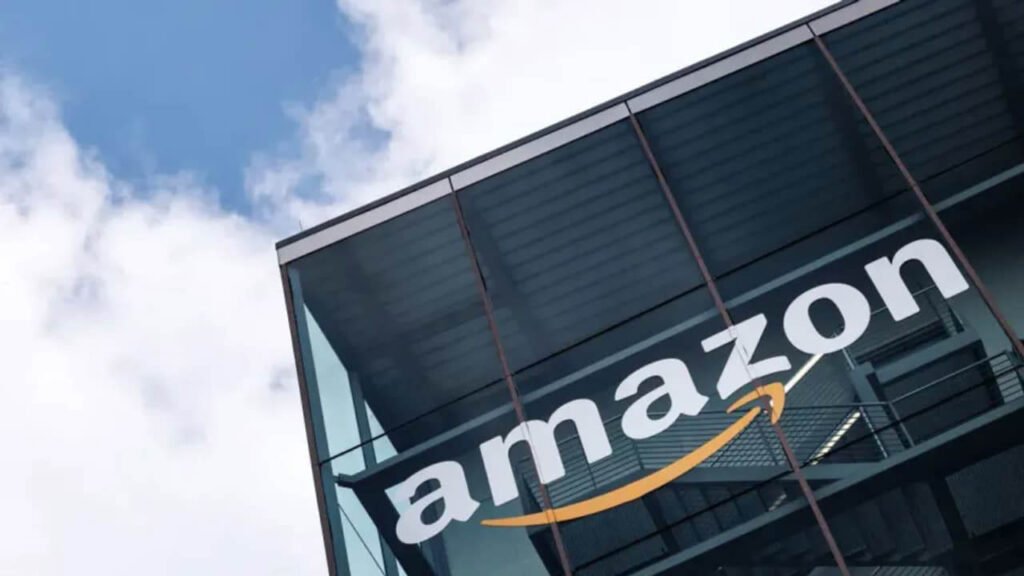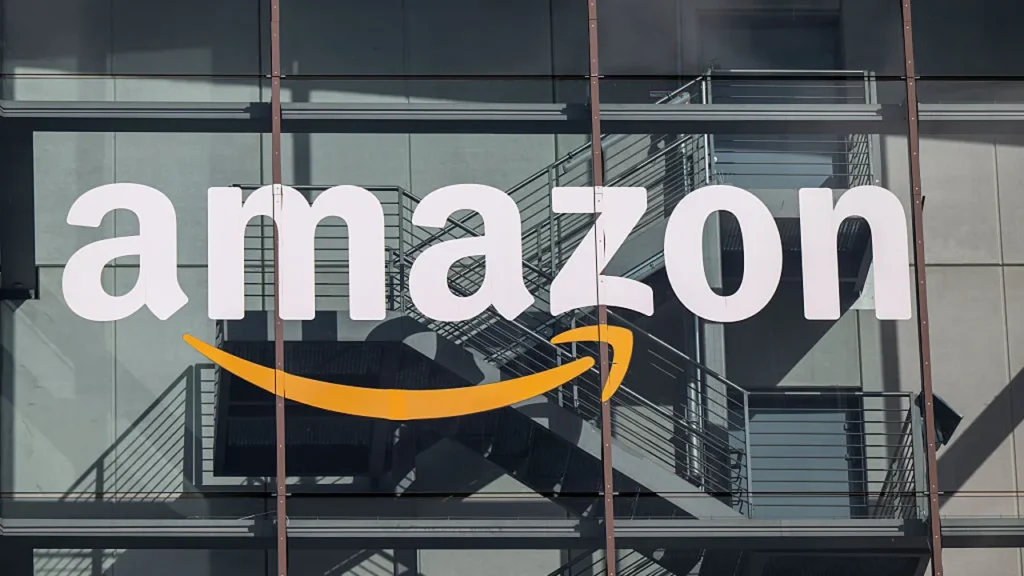Table of Contents
Amazon stock is a global giant with an empire that touches almost every aspect of life today, is much more than just a platform for e-commerce. Its influence is vast, from cloud computing to digital streaming and advertising. Amazon’s stock is a tale of growth and transformation for investors. Understanding Amazon’s journey, its business model and future prospects are key to making an informed investment. This article is covered by financeinfotech.com.

Amazon stock: A look back at its historical performance
Amazon began its journey to the stock exchange on May 15, 1997. The company’s IPO price was only $18 per share. After adjusting for the multiple stock splits that the company has experienced over the years the original price is a fraction of what it currently is. A few thousand dollars invested early would have turned into a multimillion-dollar fortune, showing the incredible returns.
Amazon expanded its retail dominance in the post-bubble period. Amazon Prime was introduced in 2005. This masterstroke created a recurring revenue stream and a strong customer base. The most important turning point in its valuation was an entirely separate business: Amazon Web Services. AWS was launched in 2006 and pioneered cloud computing infrastructure-as-a-service. The company quickly turned it into a profit-making machine, with high-margin revenues that funded the retail business at low margins and subsidized new ventures. Amazon became more than a retailer. It was also a technology powerhouse. This realization pushed the stock to new highs in the 2010s.
Deconstructing Amazon Juggernaut : Business Models and Revenue Streams
Understanding Amazon’s business is essential to understanding its stock. Its valuation does not depend on one product, but rather on an ecosystem of powerful segments.
North America & International (E-commerce)
It is Amazon’s most prominent and original business. This includes the online sale of millions of items from both Amazon and third-party vendors. Third-party services such as fulfillment, shipping and other fees are very profitable. Retail is a business with thin margins. However, the massive scale of its operations and its logistical expertise creates a competitive advantage. This segment is also influenced by physical stores such as Whole Foods Market.
Amazon Web Services AWS
AWS is undisputedly the global leader in cloud computing. It offers a wide range of services to large corporations, governments and startups. These include computing power, databases and machine learning tools. AWS’s profitability is the key to its value. Amazon’s profit is largely driven by its ability to consistently deliver operating margins that are far higher than those of the retail sector. AWS’s powerful infrastructure is being pushed to its limits by the growth of artificial-intelligence.
Advertisement
Amazon’s advertising revenue is often overlooked but it has grown to be a high-margin and significant source of income. Amazon uses its massive e-commerce platform as a way to sell display ads and sponsored product placements to sellers that want to reach the company’s huge customer base. These ads are highly effective because they are displayed to shoppers who have high purchase intent. This makes Amazon a serious competitor to digital advertising companies like Google and Meta.
Subscriptions
Amazon Prime memberships are the main driver of this segment. Subscribers can pay an annual or monthly subscription fee to access benefits such as free shipping, Prime Video and Amazon Music. This model of recurring revenue creates a predictable cash flow and deepens customer engagement and loyalty with Amazon’s ecosystem.

Amazon Stock Value: Key Factors to Consider
Amazon’s stock movement is determined by a number of factors that are interconnected.
1. Financial Performance and Growth
Investors pay close attention to Amazon’s quarterly reports. The following are key metrics:
- Revenue growth: A strong top-line increase, particularly in high-margin sectors like AWS or Advertising, is a good sign.
- Operating margin: The ability of revenue to be translated into profit is essential. The high margins of AWS are crucial to the overall profitability of the company.
- Earnings per Share (EPS) This is the primary driver for stock price movements.
2. Competitive Advantages (the “Moat”)
Amazon’s ability to protect its long-term profit from competitors is enormous.
- Effects of Network: As more buyers join the platform, more sellers will be attracted, resulting in a greater selection and lower prices for buyers.
- Logistics and Scale: The vast network of fulfillment allows for a fast and inexpensive delivery, which is hard for competitors to duplicate.
- Brand Recognization: Amazon has a strong reputation for customer service and convenience.
- High switching costs: Migrating IT infrastructure complex to a competitor can be a risky and costly endeavor.
3. Market and Economic Conditions
AMZN, like all stocks is affected by macroeconomics factors. High interest rates may make future earnings appear less valuable and thus affect the stock price. The health of the economy is directly related to consumer spending. A recession can slow retail growth. The market sentiment towards the entire technology sector is also important.
4. Innovation and Future Bets
Amazon’s value is highly dependent on its innovation and ability to find the next AWS. The company spends billions on research and development in areas such as:
- Artificial intelligence: Integrating AI in everything from Alexa, its voice assistant, to AWS.
- Health: Amazon Pharmacy and other health tech initiatives.
- Robotics & Automation: Enhancing Efficiency in Fulfillment Centers
- Project Kuiper: Long-term project for global connectivity. The market rewards Amazon’s forward-looking approach by pricing in the future success of these growth drivers.
Investment Strategies: Opportunities and Risks
To invest in Amazon, you must understand both the upside potential and the inherent risk.
Opportunities
E-commerce and cloud dominance continues: Retail and AWS continue to grow. The shift from online shopping to cloud computing has not yet ended, and there is still a lot of room for growth. AI Revolution: As generative AI grows, AWS will be the primary beneficiary. This could be a major growth driver for the company.
Margin expansion: As Amazon’s higher-margin business like advertising and AWS continues to grow faster than its lower-margin retailer segment, Amazon could see its overall profitability improve. New Ventures The success of any of its major bets such as Healthcare or Project Kuiper could open up new market opportunities worth trillions of dollars.
Risks
Regulatory Scrutiny Amazon is constantly under antitrust scrutiny by governments in the U.S.A. and Europe. Stocks could be negatively affected by any significant regulatory action such as the forced breakup or dissolution of the company. Competitors: Although Amazon is the leader, there are fierce competitors on all fronts. Microsoft Azure and Google Cloud pose formidable competition to AWS. Walmart and Shopify challenge its ecommerce dominance.
Macroeconomic headwinds: An economic downturn that is sustained could affect consumer spending, corporate IT budgets and slow growth in Amazon’s key segments. Execution risk: Success of the company depends on its ability execute ambitious plans. Investors could be disappointed if the company fails to innovate or improve its operational efficiency. This can affect stock prices.
What lies ahead for Amazon Stock in the future?
Amazon’s future is bright and complex, but it appears to be bright. Amazon is at the forefront of many secular trends, including e-commerce and cloud computing. Digital advertising, artificial intelligence, and digital advertising are also part of this company’s focus. The company’s leadership in these fields provides a solid basis for continued growth. AI is expected to become the primary driver of change. AWS will capture a large share of spending on AI model inference and training. Amazon, on the other hand, is integrating AI into its retail operations to optimize logistics and personalize customer experiences.
However, challenges remain. The global regulatory landscape is a constant battle. To maintain its competitive edge, the company must invest continuously and execute flawlessly. The performance of the stock will be determined by its ability to grow its high-margin segment while managing its vast scale and complexity.
Summary of key Takeaways
Amazon is no longer just an online bookshop. It has become a tech conglomerate that dominates e-commerce and cloud computing. Amazon Web Services, its profit engine, has seen a phenomenal rise in stock prices due to the company’s relentless innovation. The valuation of the company is backed by a powerful eco-system with strong competitive benefits, such as network effects, scale and high switching costs.
AWS’s continued expansion, resulting from the AI boom and its growth in high-margin advertising are the key growth opportunities. The major risks are regulatory pressure, intense competitiveness, and macroeconomic conditions. Investing in Amazon Stock means you’re betting on the continued success of the major technological trends, and the company’s ability to innovate and execute at scale.

FAQs
Q Does Amazon stock make a good investment or not?
Amazon is viewed by many analysts as a good long-term investment because of its leadership in sectors with high growth, such as cloud computing and electronic commerce.
Q What are the main risks associated with investing in Amazon?
Regulations: Antitrust investigations that are ongoing in the U.S. or Europe may lead to fines and regulations that limit their business practices.
Competition – Intensive competition between Microsoft and Google on cloud computing, and Walmart and other retailers for ecommerce.
Economic Sensitivity A recession in the world could affect both corporate and consumer spending.
Q What has been the performance of Amazon’s stock historically?
Amazon is one of the most successful stocks in history. Amazon has been a life-changing investment for its early investors since its 1997 IPO. This was due to its growth from an online book seller to a global tech powerhouse.
Q What is driving Amazon’s stock prices?
Stock prices are affected by many factors, including: financial performance, growth in revenue and profitability, AWS’s ability to innovate, enter new markets and market sentiment.
Q Is Amazon Stock paying a dividend?
Amazon Stock has never paid out a dividend. In the past, Amazon has reinvested all profits into its business in order to fund expansion, growth, and research. This is a common strategy among high-growth tech companies that are focused on creating long-term value rather than providing immediate income for shareholders.
Conclusion
Amazon’s transformation into a diversified tech giant with dominant positions in e-commerce, cloud computing, and advertising. It highlights the company’s historical success, driven by innovation and the growth of Amazon Web Services (AWS), while acknowledging the opportunities in AI and high-margin segments like advertising. However, it also notes the risks, such as regulatory scrutiny, competition, and economic sensitivity.














